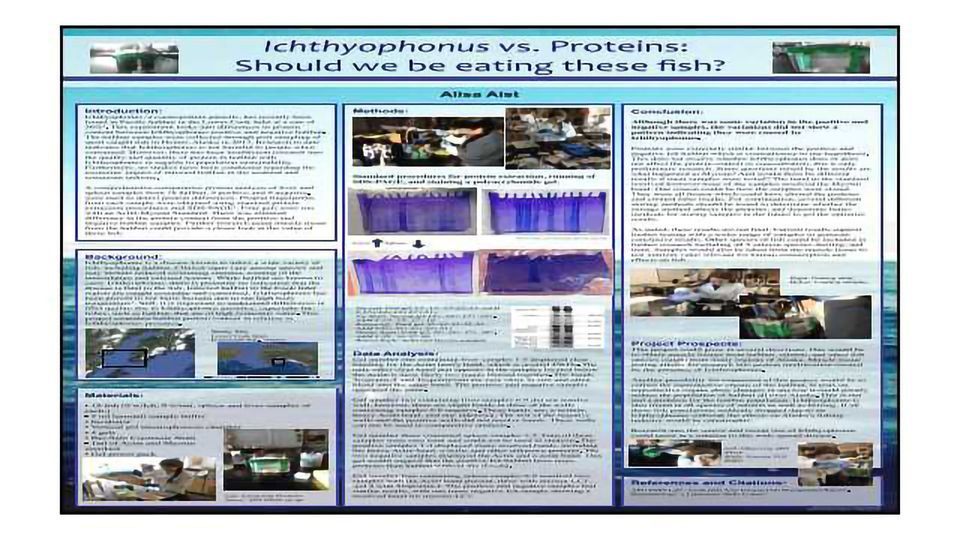Ichthyophonus vs. Proteins: Should we be eating these fish?

This experiment looks into differences in protein content in Ichthyophonus positive and negative Halibut from the Lower Cook Inlet area. The Halibut these samples were taken from were caught by fishermen to sell which makes this study important from a public health perspective. Almost 76.7% of Halibut have Ichthyophonus in Prince William Sound. Unpublished data indicate the infection rate in the Lower Cook Inlet is around 30%. While research has confirmed that Ichthyophonus does not harm people, there has been insufficient research into the quality and quantity of protein in Halibut with Ichthyophonus. A comprehensive comparative protein analysis of liver and spleen samples from 18 Halibuts, 9 positive and 9 negative for Ichthyophonus, was used to detect potential protein changes. Liver and spleen samples were chosen as indicators for further research into the protein content of other organs and muscles. Protein fingerprints from each sample were obtained using standard protein extraction procedures and SDS-PAGE Gel Electrophoresis. The result was 4 useable protein fingerprints each run with an Actin-Myosin Standard. Although resolution of the gels could have been clearer with refinement of protocol, some bands were visible following staining. There was minimal difference in the protein content from the positive or negative halibut samples. Further research using muscle tissue from the Halibut would enable a closer look at the nutritional value of these fish that are being sold. This data would be valuable when evaluating the potential impact on human consumption as well as the health of the Halibut population.





